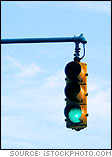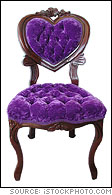What colours mean
What Colours Mean
We live in a colorful world. In many countries, colours represent
various holidays; they are also used to express feelings and enliven
language. Find your favorite color and see what it means around the
world.
~ RED ~
- For the ancient Romans, a red flag was a signal for battle.
- Because of its visibility, stop signs, stoplights, brake lights, and fire equipment are all painted red.
- The ancient Egyptians considered themselves a red race and painted their bodies with red dye for emphasis.
- In Russia, red means beautiful. The Bolsheviks used a red flag as their symbol when they overthrew the tsar in 1917. That is how red became the color of communism.
- In India, red is the symbol for a soldier.
- In South Africa, red is the color of mourning.
- It's considered good luck to tie a red bow on a new car.
- In China, red is the color of good luck and is used as a holiday and wedding color. Chinese babies are given their names at a red-egg ceremony.
- Superstitious people think red frightens the devil.
- A “red-letter day” is one of special importance and good fortune.
- In Greece, eggs are dyed red for good luck at Easter time.
- To “paint the town red” is to celebrate.
- Red is the color most commonly found in national flags.
- In the English War of the Roses, red was the color of the House of Lancaster, which defeated the House of York, symbolized by the color white.
- The “Redshirts” were the soldiers of the Italian leader Garibaldi, who unified modern Italy in the nineteenth century.
- To “see red” is to be angry.
- A “red herring” is a distraction, something that takes attention away from the real issue.
- A “red eye” is an overnight airplane flight.
- If a business is “in the red,” it is losing money.
~ GREEN ~
- Only one national flag is a solid color: the green flag of Libya.
- Ancient Egyptians colored the floors of their temples green.
- In ancient Greece, green symbolized victory.
- In the highlands of Scotland, people wore green as a mark of honor.
- Green is the national color of Ireland.
- A “greenback” is slang for a U.S. dollar bill.
- Green means “go.” When “all systems are green,” it means everything is in order.
- The green room of a concert hall or theater is where performers relax before going onstage.
- The “green-eyed monster” is jealousy.
- A greenhorn is a newcomer or unsophisticated person.
- Being “green around the gills” is looking pale and sickly.
- “Green with envy” means full of envy or jealousy.
- A person with a “green thumb” is good at making plants grow.
- A green, or common, is a town park.
- Green is a healing color, the color of nature.
~ BLUE ~
- In ancient Rome, public servants wore blue. Today, police and other public servants wear blue.
- In Iran, blue is the color of mourning.
- Blue was used as protection against witches, who supposedly dislike the color.
- If you are “true blue,” you are loyal and faithful.
- Blue stands for love, which is why a bride carries or wears something blue on her wedding day.
- A room painted blue is said to be relaxing.
- “Feeling blue” is feeling sad. “Blue devils” are feelings of depression.
- Something “out of the blue” is from an unknown source at an unexpected time.
- A bluebook is a list of socially prominent people.
- The first prize gets a blue ribbon.
- A blue blood is a person of noble descent. This is probably from the blue veins of the fair-complexioned aristocrats who first used this term.
- “Into the blue” means into the unknown.
- A “bluenose” is a strict, puritanical person.
- A “bluestocking” used to be a scholarly or highly knowledgeable woman.
- The pharaohs of ancient Egypt wore blue for protection against evil.
- The “blues”
is a style of music derived from southern African-American secular
songs. It influenced the development of rock, R&B, and country
music.
- “Blue laws” are used to enforce moral standards.
- A blue ribbon panel is a group of especially qualified people.
~ Purple, Violet ~
- The Egyptian queen Cleopatra loved purple. To obtain one ounce of Tyrian purple dye, she had her servants soak 20,000 Purpura
snails for 10 days.
- In Thailand, purple is worn by a widow mourning her husband's death.
- A “purple heart” is a U.S. military decoration for soldiers wounded or killed in battle.
- Purple robes are an emblem of authority and rank.
- “Purple speech” is profane talk.
- “Purple prose” is writing that is full of exaggerated literary effects and ornamentation.
-
Leonardo da Vinci believed that the power of meditation increases 10 times when done in a purple light, as in the purple light of stained glass.
- Purple in a child's room is said to help develop the imagination according to color theory.
- Richard Wagner composed his operas in a room with shades of violet, his color of inspiration.
~ Yellow ~
- In Egypt and Burma, yellow signifies mourning.
- In Spain, executioners once wore yellow.
- In India, yellow is the symbol for a merchant or farmer.
- In tenth-century France, the doors of traitors and criminals were painted yellow.
- Hindus in India wear yellow to celebrate the festival of spring.
- If someone is said to have a “yellow streak,” that person is considered a coward.
- In Japan during the War of Dynasty in 1357, each warrior wore a yellow chrysanthemum as a pledge of courage.
- A yellow ribbon is a sign of support for soldiers at the front.
- Yellow is a symbol of jealousy and deceit.
- In the Middle Ages, actors portraying the dead in a play wore yellow.
- To holistic healers, yellow is the color of peace.
- Yellow
has good visibility and is often used as a color of warning. It is also
a symbol for quarantine, an area marked off because of danger.
- “Yellow journalism” refers to irresponsible and alarmist reporting.
~ White ~
- A white flag is the universal symbol for truce.
- White means mourning in China and Japan.
- Angels are usually depicted wearing white robes.
- The ancient Greeks wore white to bed to ensure pleasant dreams.
- The Egyptian pharaohs wore white crowns.
- The ancient Persians believed all gods wore white.
- A “white
elephant” is a rare, pale elephant considered sacred to the people of
India, Thailand, Burma, and Sri Lanka; in this country, it is either a
possession that costs more than it is worth to keep or an item that the
owner doesn't want but can't get rid of.
- It's considered good luck to be married in a white garment.
- White heat is a state of intense enthusiasm, anger, devotion, or passion.
- To whitewash is to gloss over defects or make something seem presentable that isn't.
- A “white knight” is a rescuer.
- A white list contains favored items (as opposed to a blacklist).
- A “whiteout” occurs when there is zero visibility during a blizzard.
- A “white sale” is a sale of sheets, towels, and other bed and bath items.
- A “whited sepulcher” is a person who is evil inside but appears good on the outside, a hypocrite.
- “White lightning” is slang for moonshine, a homebrewed alcohol.
- A white room is a clean room as well as a temperature-controlled, dust-free room for precision instruments.
- White water is the foamy, frothy water in rapids and waterfalls.
Black
- The ancient Egyptians and Romans used black for mourning, as do most Europeans and Americans today.
- The “Blackshirts” were the security troops in Hitler's German army, also known as the S.S.
- Black often stands for secrecy.
- Black humor is morbid or unhealthy and gloomy humor.
- A “blackhearted” person is evil.
- If a business is “in the black,” it is making money.
- A “blacklist” is a list of persons or organizations to be boycotted or punished.
- Black is associated with sophistication and elegance. A “black tie” event is formal.
- A black belt in karate identifies an expert.
- A black flag in a car race is the signal for a driver to go to the pits.
- A blackguard is a scoundrel.
-
The ancient Egyptians believed that black cats had divine powers.
- Black lung is a coal miner's disease caused by the frequent inhaling of coal dust.
- Blackmail is getting things by threat.
- Black market is illegal trade in goods or money.
- A black sheep is an outcast.
- “Blackwash” (as opposed to “whitewash”) is to uncover or bring out in the light.
- A blackout
is a period of darkness from the loss of electricity, for protection
against nighttime air raids, or, in the theater, to separate scenes in a
play.
- When you “black out,” you temporarily lose consciousness.







No comments:
Post a Comment
Hello ...traveller :)
Please feel free to express your opinions by leaving a comment. Thank you.
Regards,
Marcela T.